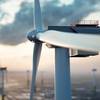During the quarter and post quarter end, there has been continued momentum in the start-up of new LNG liquefaction capacity with the fourth train at Sabine Pass in the U.S. shipping its first commissioning cargoes in August 2017, said GasLog Partners.
Sabine Pass has now shipped approximately 200 cargoes since start up in early 2016. Post quarter end, Chevron's Wheatstone LNG project in Australia started production with the first LNG shipment expected in the coming weeks.
Dominion's Cove Point project in the U.S. and Novatek's Yamal LNG project in Russia are both expected to start LNG production by the end of 2017 and ramp up exports into 2018. With the addition of these two projects, over 30 million tonnes per annum ("mtpa") of new nameplate capacity will have been added in 2017, an increase of 11% over 2016, with the majority coming online in the second half of the year.
Looking longer term, final investment decisions ("FIDs") for new liquefaction projects continue to be limited in the current environment, although a number of projects are making further progress towards FID in the U.S. and other regions. Tellurian has acquired natural gas reserves in northern Louisiana as future feedstock for their Driftwood LNG project and has also chartered an LNG vessel to trade short term LNG cargoes.
In July 2017, Magnolia LNG secured $1.5 billion of conditional funding from Stonepeak, which is expected to fund a significant portion of the project's future equity requirement. Also during the quarter, Next Decade merged with Harmony Merger Corp. to achieve a public listing on the Nasdaq and has a current market capitalisation of around $1 billion. In Mozambique, it has been reported that PTT of Thailand has committed to offtake from the Area 1 LNG project which is expected to take FID in 2018.
Demand for LNG in 2017 to date has continued to rise sharply, particularly in Asia and Europe, with material year-on-year increases in the world's three largest import markets, Japan, South Korea and China, where imports have increased by 5%, 21% and 44% respectively.
Rising Asian LNG demand into the Northern Hemisphere winter months has caused Asian LNG prices to rise, resulting in a reopening of both the U.S. - Asia and Europe - Asia gas price arbitrages. The same trend emerged during the 2016-2017 winter period, resulting in a greater number of U.S. cargoes travelling to Asia, which increased tonne mile demand and helped to drive LNG spot shipping rates higher.
Longer term demand for LNG is also emerging. In August 2017, Petronet announced that it had renegotiated its LNG supply agreement with ExxonMobil with new terms including an increase of 1 mtpa to be supplied from ExxonMobil's global portfolio. In September 2017, it was reported that PTT had entered into a contract to acquire 2.6 mtpa for 20 years from the Area 1 LNG project in Mozambique.
Also in September 2017, Petrobangla, the state-owned oil company of Bangladesh, entered into a contract with Qatar to acquire 2.3 mtpa on average for a 15-year period. Finally, in August 2017, it was announced that Gunvor had committed to take up to 2.2 mtpa from the Fortuna project in Equatorial Guinea.
A number of offtakers from LNG projects currently under development are yet to secure all of their shipping requirements and we are seeing an increased level of tender activity for both near-term and longer-term shipping requirements. These tenders for multi-month to multi-year periods are for both newbuild vessels and on-the-water vessels, with the latter being positive in terms of absorbing the recent oversupply in the spot market.
In the shorter term LNG shipping market, tri-fuel diesel electric ("TFDE") headline rates have continued to rise as we enter the Northern Hemisphere winter, with Clarksons currently quoting headline rates of $58,000, an increase of 93% from the 2017 low and approximately 76% higher than this time last year.
Whilst the recovery in spot rates to mid-cycle levels is taking longer than anticipated, we have seen significantly more fixtures in 2017 compared to the same period in 2016, greater seasonality and consistently higher rates in 2017 than in 2016. This improvement in rates, coupled with no new vessel orders in the quarter and only eight in 2017 to date, gives us confidence in a continuing market recovery.
A number of markets that do not currently import gas are exploring LNG as an alternative to oil and coal or to replace declining domestic supply. Many countries with growing natural gas demand for power generation and other uses, such as Ivory Coast, Ghana, South Africa, Bangladesh and Myanmar, are looking at FSRUs as a quick-to-market, cost-effective solution to import LNG.
Other countries with FSRUs already in place, such as Pakistan, are looking at expanding their use of FSRUs due to the successful commissioning and effective operations of the existing units. Many producers and marketers of LNG appear to be focusing their attention on FSRUs as a key enabler in creating new markets for their LNG.













